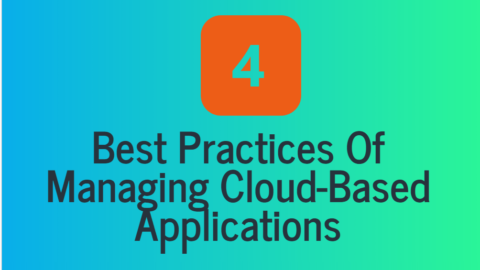Information Technology’s (IT) Function in the Banking Industry
IT has revolutionized customer interactions in banking. Online and mobile banking services allow customers to access accounts, transfer funds, pay bills, and apply for services anytime, anywhere. This round-the-clock accessibility has greatly improved convenience and satisfaction. Information Technology (IT) plays a critical role in the banking industry, enabling banks to streamline operations, enhance customer experiences, improve security measures, and stay competitive in the digital age. Here are some key functions of IT in the banking industry:
Table of Contents
What is information technology in banking?
What are the technology used in banking?
Online Banking
Digital banking has become more popular as a result of information technology, replacing conventional brick-and-mortar banking with easy-to-use online platforms. Customers may now do a variety of banking tasks from the convenience of their homes or through mobile devices, including account management, cash transfers, bill payments, and loan applications. Digital banking has increased client convenience, decreased branch visits, and made it possible to access financial services around the clock. Therefore, it is important to find a software vendor that can implement all the features. So that you do not search for a long time, pay attention to this: https://www.luxoft.com/industries/banking
Banking Security Online
The security of online banking transactions is greater by IT. Banks make significant investments in cybersecurity measures to safeguard client information, guard against illegal access, and spot fraudulent activity. The integrity of online banking platforms is preserved through the use of advanced encryption methods, multi-factor authentication, and real-time transaction monitoring systems.
Mobile Banking
Customers may now access financial services on their smartphones or tablets thanks to mobile banking, which has become quite popular. Mobile banking applications provide a user-friendly interface for managing accounts, transferring money, making deposits on the go, and even getting tailored financial advice. Financial transactions are now more accessible and easy thanks to information technology, which also improves the whole consumer experience.
ATMs (Automated Teller Machines) and Information Technology in Banking
By enabling self-service alternatives for cash withdrawals, balance checks, and other standard banking operations, ATMs have transformed banking. Modern ATMs now have improved features including cardless transactions, check deposits, and customizable settings thanks to IT. ATMs provide 24-hour accessibility to financial services and lessen reliance on physical branches.
Analytics of Data and Information Technology in Banking
Information technology has made it possible for banks to use data analytics to make better decisions and provide more individualized services. To provide specialized goods and services, banks may monitor client behavior, spending habits, and financial trends. Data analytics aids banks in identifying potential for revenue development, managing risks, and detecting fraud. Banks can make data-driven choices and provide customized solutions to their clients by using the possibilities of big data.
Banking Core Systems
The foundation of banking operations is provided by core banking systems. Hence, these systems incorporate several banking procedures, including account maintenance, client administration, transaction processing, and reporting. Core banking systems have been altered by information technology, becoming more effective, scalable, and responsive to changing business demands.
Systems for Online Payments
Online payment methods have been transformed by IT, allowing safe and practical transactions. Customers may pay for products, invoices, and services online thanks to online payment gateways and electronic money transfer systems. As a result, there is a more effective and transparent payment environment. Hence, this has decreased the dependency on cash transactions.
IT enables the development and maintenance of digital banking channels, including online banking portals, mobile applications, and ATMs. These digital channels allow customers to access their accounts, make transactions, pay bills, and perform various banking activities conveniently from anywhere at any time.
Management of Customer Relationships (CRM)

IT-driven CRM solutions have revolutionized customer relationship management in the banking industry. Hence, to understand the requirements, tastes, and behavior of their customers, banks may now collect and analyze client data. CRM systems assist banks in personalizing their offers, enhancing customer satisfaction, and creating enduring partnerships.
IT manages vast amounts of data generated by banking operations. It includes organizing and storing data securely, implementing data governance policies, and utilizing advanced analytics to extract valuable insights. Data analytics helps banks make informed decisions, detect fraudulent activities, personalize customer experiences, and develop targeted marketing strategies.
Fintech Partnerships
Collaborations between conventional banks and fintech businesses have been made possible by information technology. Peer-to-peer lending, robo-advisory, and digital wallets are just a few of the specialty financial services that fintech businesses, which use cutting-edge technology, provide. To improve their service offerings, investigate novel business models, and maintain competitiveness in a market that is continually changing, banks might collaborate with fintech firms.
Efficient Operations:
IT streamlines internal banking processes, making them more efficient and cost-effective. Automation of routine tasks, digitization of paperwork, and the use of cloud computing and data analytics improve operational efficiency while reducing errors and redundancy.
IT tools assist banks in assessing and managing various types of risks, including credit risk, market risk, and operational risk. Risk assessment models powered by IT enable banks to make informed decisions and mitigate potential threats.
Infrastructure and Network Management:
IT ensures the efficient functioning of the bank’s network infrastructure, including servers, databases, and communication systems. It involves managing hardware, software, and network resources to ensure uninterrupted operations.
Conclusion on Information Technology in Banking and its Effects
The banking industry is being significantly shaped by information technology and it is being reshaped by the ongoing development of IT, which is presenting fresh chances for expansion, efficiency, and customer-focused services. Overall, IT is a key enabler for the banking industry, supporting the digital transformation, operational efficiency, security, and compliance requirements of modern banks.

Business Developmeny Manager at PAS InfoCom Technologies Ltd. Experienced in project management with a demonstrated history of working in the information technology and services industry.











